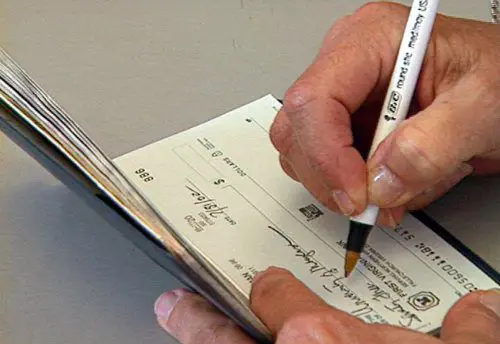Manual inventory is still being done by a lot of businesses. It is not as popular as it used to be as there are many computer software programs that are making it easier to calculate the totals and feed into the ordering area where you can order more inventory with the press of a button. Some inventory management software, like Fishbowl, even integrates with QuickBooks. But if you don’t have the time or money to go into a computer program, you can still do the inventory manually. You simply need to be organized.
Who Can Track Inventory Manually?
Anyone has the ability to track inventory manually. Essentially, all you need include:
– Clipboard
– List of items to inventory
– Pencil
– Calculator
Obviously, it can be advantageous to track inventory manually if you have a low number of items that you need to inventory. As you begin to get into larger quantities as well as split cases, it can be advantageous to switch to a more computerized method.
Typically, small businesses will inventory manually. This is as a result of cost as well as a small stock. It’s also important to understand what is meant by the word “manual.” This can take on two meanings. If you do all of your counting and your calculations, then it is definitely manual. However, you can count manually and then enter it into a computer and it will still be considered “manual” because you are physically counting everything. This would be opposed to the automated way of using a barcode and scanner where you would do everything with a handheld device.
The choice is up to you. As long as you know the tips and tricks to count your inventory, you can do it in the format that is easiest for you.
Tips & Tricks for Tracking Inventory Manually
You need a beginning inventory and an ending inventory. You also need to establish the cost of everything by case and as an individual item so that you can calculate your cost of goods between inventory points.
Once you start counting on the first of every month, it’s best to continue doing inventory on that same day each month. You can also choose Tuesday or Wednesday if you do inventory weekly, as long as you do it on the same day. This will ensure that you are able to make accurate comparisons in terms of how much you spend. If you are not consistent, your cost of goods may be for 42 days on one month and 27 on the next. This will make it hard to budget and get a true reading of your profits.
Ensure that you break out cases. If you have a case of 72 items and one case is broken out and you only have 3 left, you cannot count it as a case. When cases are this large, it becomes harder to use a decimal and call it 0.04. This is why you want to have two units to count in – case and individual unit.
Update your prices regularly based upon what you are purchasing your items for. You can use the invoices to get an accurate price for each item. If you input your invoices by item into a spreadsheet or computer program, you may even be able to generate inventory sheets so you don’t have to write everything out manually.
What’s Done with the Information?
The beginning inventory needs to be calculated. This should be done as a carry-over from the previous week or month. If you are just starting with inventory for the first time, then it would be the sum of all of your product invoices.
Your ending inventory needs to be calculated as well. This may take some time to do manually because you will need to determine how much each line item is. If you have units and cases, these need to be calculated separately. For example, if a case is $72 and there are 72 items, then each unit is $1. You would need to multiply the number of cases by $72 and the number of units by $1 and then add them together.
As you go down the line, you will do this for each and every item that you have. If you can place these into an excel sheet with built-in formulas, it can help to reduce the time. From there, you can have an ending inventory.
The ultimate formula that you will need to use is:
Beginning Inventory + Purchases – Ending Inventory = Cost of Goods
If you then divide this by your revenue, you can get the cost of goods as a percentage to relate to your sales. You can set benchmarks to stay at or under budget.
Other Information to Consider
When you plan on conducting inventory manually, you have to determine how often you are going to do it. At the bare minimum for tax purposes, you will need to conduct inventory on an annual basis to be able to account for the product that you have so that you can determine how much will be carried into the next calendar year.
If you rely on the inventory to tell you what you need to order and how well you are doing in terms of profit, you will want to conduct inventory more frequently. This can be done weekly or monthly based upon your operations.
As you have to conduct inventory more frequently or for more items, you may want to consider the option of moving to a digital inventory where you can scan items, calculate items on the computer, and run more reports. You can use a computer for as little or as much as the inventory as possible. If you at least take the time to load in your inventory and establish a cost for each item, the calculations can be done for you. Inventory pages can also be generated so you can limit the amount of paperwork that is hand-written.
http://www.camcode.com/asset-tags.html
http://www.clearlyinventory.com/inventory-basics
http://www.ehow.com/list_7386583_advantages-manual-inventory-systems.html
http://www.formville.com/C9_free-inventory-forms.html
http://www.floradelaney.com/2012/04/how-to-conduct-store-inventory-effectively/
http://retail.about.com/od/buyinginventory/ht/physical-inventory.htm
http://www.infoentrepreneurs.org/en/guides/stock-control-and-inventory/
http://office.microsoft.com/en-us/templates/inventory-list-TC006082717.aspx
http://www.wikihow.com/Keep-Inventory
http://www.ultimatecalculators.com/total_inventory_cost_calculator.html






